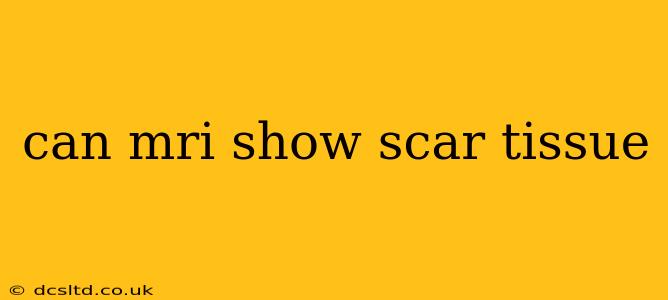Can MRI Show Scar Tissue?
Yes, MRI (magnetic resonance imaging) can often show scar tissue, but the visibility depends on several factors, including the type of scar tissue, its location, and the age of the scar. While MRI isn't always the definitive test for scar tissue detection, it's a valuable tool in many cases. Let's delve into the details.
What Types of Scar Tissue Can MRI Detect?
MRI is particularly effective at visualizing certain types of scar tissue. It excels at showing:
- Hypertrophic Scars: These raised, thickened scars are usually easily visible on MRI due to their increased tissue density and altered collagen structure.
- Keloid Scars: These are similar to hypertrophic scars but extend beyond the original wound boundary. Their distinctive appearance often makes them readily identifiable on MRI scans.
- Internal Scars: MRI is excellent at detecting scar tissue within the body, such as those resulting from surgery or injuries affecting internal organs or tissues. This is where its ability to differentiate tissue types shines.
- Scar Tissue from Trauma: Scars resulting from significant injuries, such as burns or deep lacerations, can often be well-visualized with MRI, particularly when assessing the extent of tissue damage and healing.
What Types of Scar Tissue Might Be Difficult for MRI to Detect?
While MRI is a powerful tool, it might struggle with certain types of scar tissue:
- Very Thin or Superficial Scars: Extremely thin, superficial scars might not create enough of a contrast in tissue density to be reliably detected on MRI.
- Old Scars: As scar tissue matures and becomes more integrated with the surrounding tissue, it can become harder to distinguish on imaging.
- Scars in Certain Locations: Scars located in areas with complex anatomical structures or surrounded by similar-density tissues can be challenging to identify.
What are the Advantages of Using MRI to Detect Scar Tissue?
Compared to other imaging modalities, MRI offers several advantages for scar tissue assessment:
- Superior Soft Tissue Contrast: MRI provides excellent contrast between different soft tissues, making it easier to differentiate scar tissue from normal tissue.
- Multiplanar Imaging: MRI allows for imaging in multiple planes (axial, coronal, sagittal), providing a comprehensive view of the scar tissue and its relationship to surrounding structures.
- Non-invasive Procedure: MRI is a non-invasive procedure that doesn't involve ionizing radiation, making it a safer option for repeated examinations.
How Does MRI Differ From Other Imaging Techniques in Detecting Scar Tissue?
Other imaging methods, like ultrasound and CT scans, might provide some information about scar tissue, but they often lack the same level of detail and soft tissue contrast as MRI. Ultrasound can be useful for superficial scars, but it struggles with deeper structures. CT scans use ionizing radiation and may not provide the same level of soft tissue contrast as MRI.
What Other Information Can an MRI Provide About Scar Tissue?
Besides simply identifying the presence of scar tissue, MRI can also provide valuable information about:
- Scar Tissue Size and Extent: MRI can accurately measure the size and extent of the scar tissue.
- Scar Tissue Composition: MRI can provide some information about the composition of the scar tissue, such as the presence of fibrosis (excess collagen).
- Effect on Surrounding Structures: MRI can assess the impact of the scar tissue on adjacent organs, nerves, or blood vessels.
In summary, while MRI isn't a perfect tool for detecting all types of scar tissue in every situation, it remains a valuable imaging modality for visualizing scar tissue, particularly in cases involving internal scars, large or complex scars, or when detailed information about scar tissue characteristics is needed. Your doctor will determine the most appropriate imaging technique based on your specific needs and the location and nature of the scar tissue.
